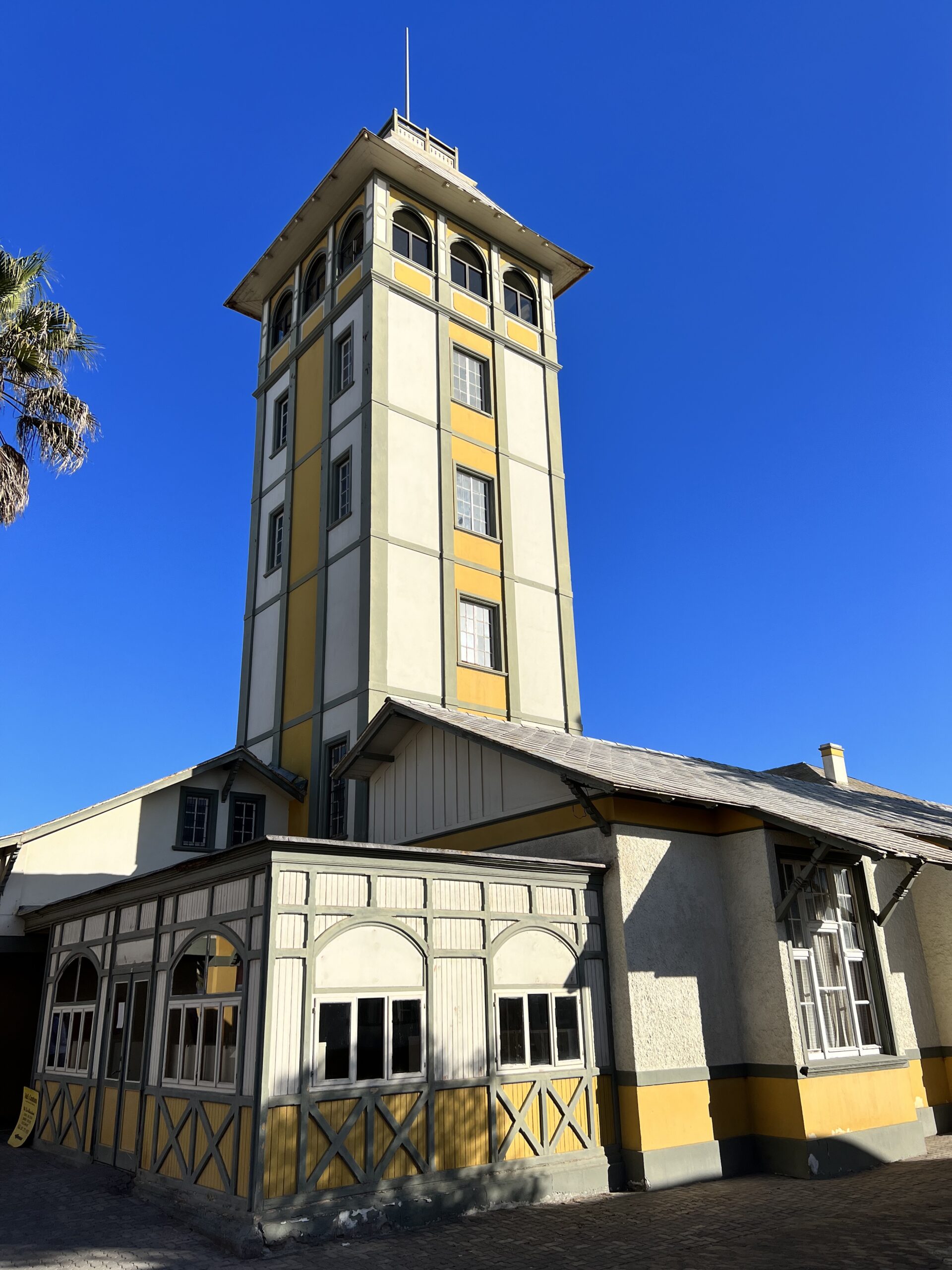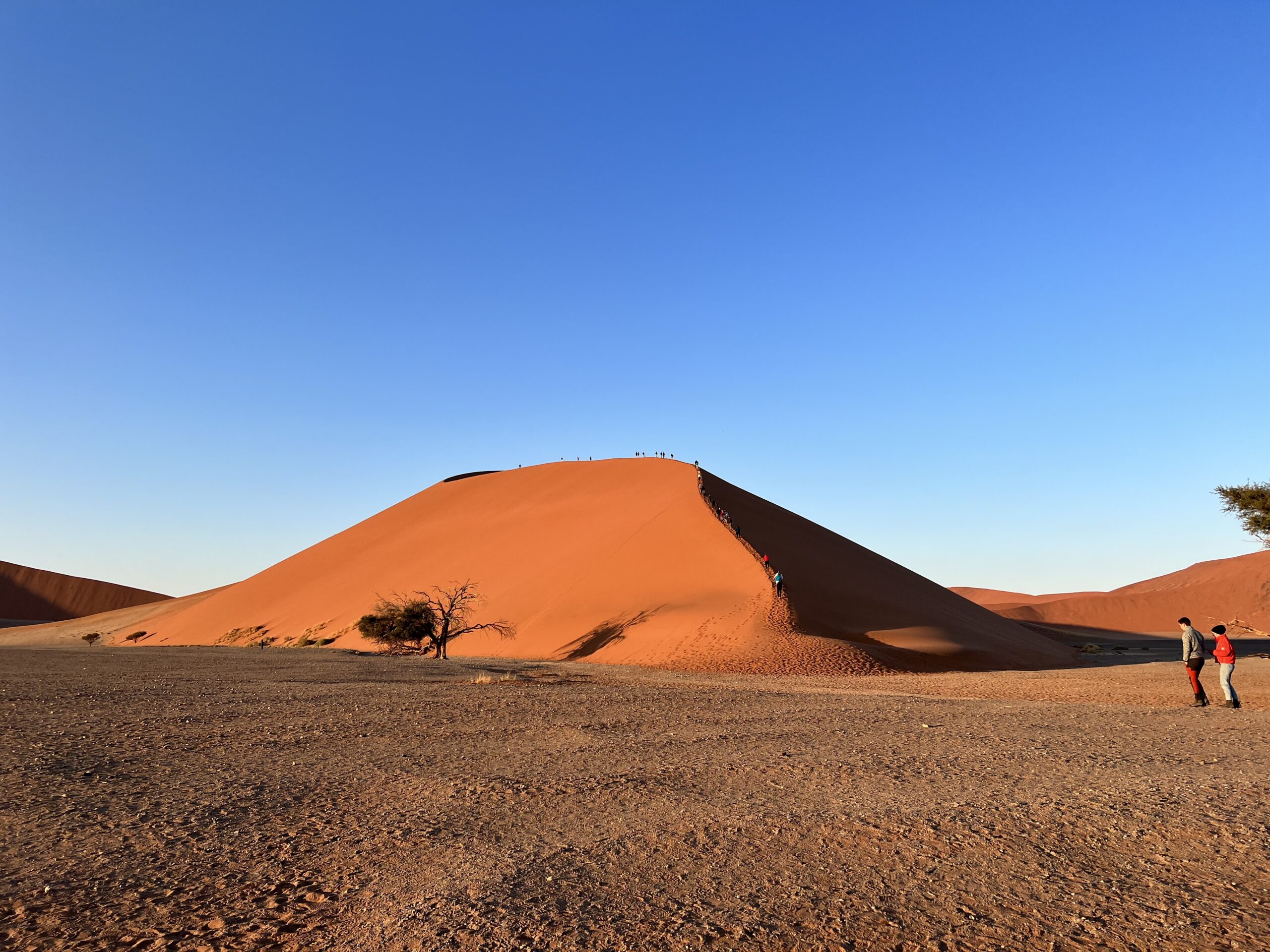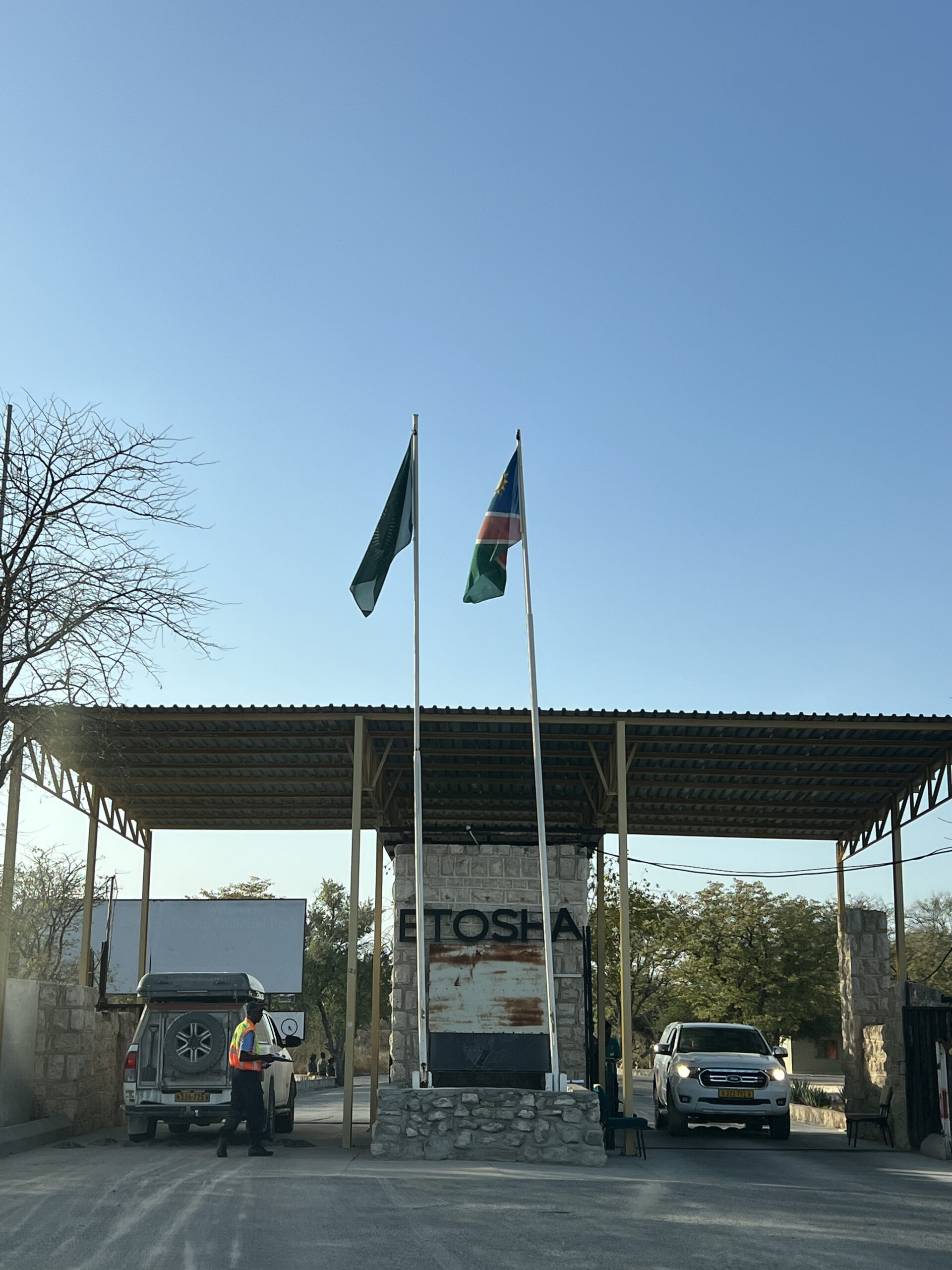
Sandwiched between Atlantic rollers and the Namib Desert, Swakopmund is one of those great traveller way stations along the African road. At once Namibia’s adventure capital and a surreal colonial remnant, part destination in its own right and part launch pad for an exploration of the Skeleton Coast and Namib Desert, this is a city with as much personality as it has sea frontage.

The city’s German origins are quite pronounced in beautiful old German Colonial buildings throughout the city, making an even starker contrast for this town sitting at the edge of the Namib Desert.

One artefact of the German colonization includes an old museum/store, selling genuine artefacts from the 19th century. Cover a child’s eyes, because some of what is on sale is aesthetically–and historically–difficult to look at. The people of Swakopmund are a quirky mix of German-Namibian residents and overseas German tourists, who feel right at home with the town’s Gemutlichkeit (appreciation of comfort and hospitality).
Swakopmund was used as the setting for The Village in the 2008 production of The Prisoner by AMC and ITV. Its quaint buildings and unusual appearance made a perfect replacement for Portmeirion where the original 1960’s series of The Prisoner was set.


Swakopmund is Namibia’s main beach resort, but even in summer, the water is never warmer than 15 deg C, this is due to the Benguela current which sweeps upwards from Antarctica. At the lagoon at the Swakop river mouth, you can watch ducks, flamingos, pelicans, cormorants, gulls etc.

In the gardens behind the museum is the well-known Swakopmund landmark – the lighthouse . The first version, built in 1903, stood at a height of only 11 m. In 1910 a further 10 m was added to reach a total height of 28 m. The lighthouse marked the harbour as well as warning ships off the treacherous Skeleton Coast – the light can be seen more than 33 km out to sea.

As with other Namibian cities, there is no public transport in Swakopmund. But the city is small enough to get around easily on foot. All the major attractions and facilities are downtown.
At The Sea Boutique Guesthouse, it offers unparalleled views of the coast. Guests can enjoy the magnificent view of the sea from each room, as well as listen to the restless waves and smell the fresh sea breeze.

Fork n Nice, a food truck that is set up facing the beach and park area. It is open only during weekdays. Mobile food trucks have also become increasingly popular due to the fact that they provide diverse food options to tourists and locals. Being near the coast, the weather can change really quickly; it can be sunny one moment and foggy the next.

Overall, Swakopmund may be the second largest town in Namibia, but as with Windhoek which was so peaceful and had not much traffic, this town was also peaceful. Overall, as a popular holiday destination, Swakopmund is a coastal city more geared towards tourists than Windhoek. Its appeal includes a pleasant summer climate, the seaside setting, its distinctly German flavour and the myriad adventure activities on offer.


